Mariamman Temple is one of the revered shrines dedicated to the Hindu goddess Mariamman. Millions of devotees consider such shrines a symbol of faith and devotion. Mariamman is primarily worshipped for the divine protection she bestows and healing powers in South India and among the Tamil diaspora. The temples dedicated to her are popular pilgrimage sites where sumptuous rituals as well as grand festivals often greet those visiting them.
Location
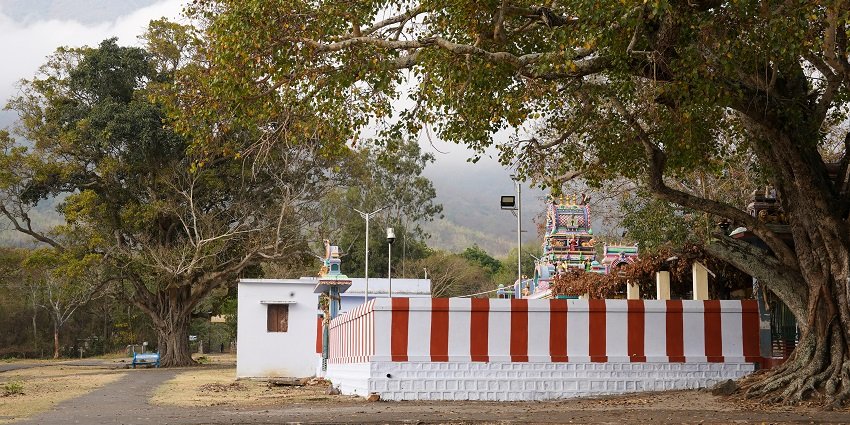
Photo: Timothy A. Gonsalves / Wikimedia Commons
Mariamman temples are spread all across India, especially in Tamil Nadu and Karnataka, but the most famous one is the Mariamman Temple in Samayapuram which is in the Tiruchirappalli district in Tamil Nadu. Samayapuram Mariamman Temple is a sacrosanct centre that attracts pilgrims from different regions of India, who mostly come here to seek relief from their suffering and diseases.
Suggested Read: Navagraha Temples In Tamil Nadu For A Unique Experience
How To Reach

Photo: Nyatto / Pixabay / Image For Representation Only
By Rail: The nearest railway station to Samayapuram Mariamman Temple is Tiruchirappalli Junction (Trichy), located around 15 km away. From the station, you can take a taxi or a bus to reach the temple.
By Road: Samayapuram is easily accessible via the national highways NH45 and NH210. You can hire taxis or use stateno-run and private bus services to reach Samayapuram.
By Air: The nearest airport is Tiruchirappalli International Airport (TRZ), located around 25 km from Samayapuram. After landing, you can hire a taxi or take a bus to Samayapuram.
Places To Visit Near Mariamman Temple
Mariamman Temple is a special place where people come to pray for good health and protection from the goddess.
1. Sri Ranganathaswamy Temple (Srirangam)
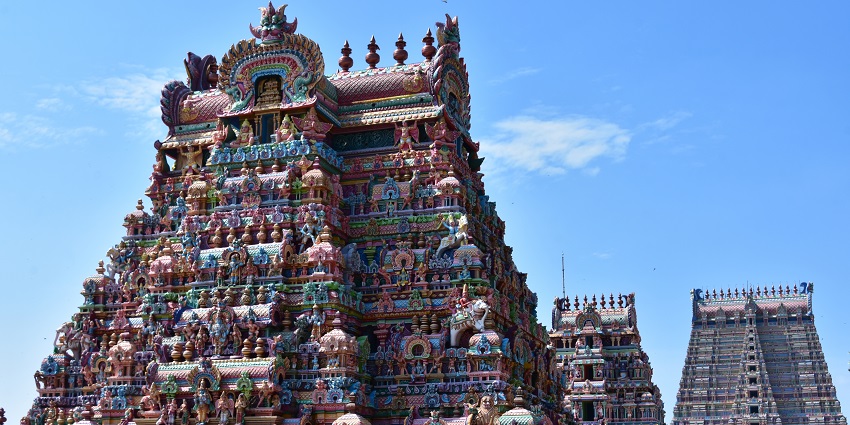
Photo: Richard Mortel / Wikimedia Commons
Located on the Srirangam island between the Cauvery and Kollidam rivers, the Sri Ranganathaswamy Temple is one of the largest functioning Hindu temples in the world. This temple, dedicated to Lord Vishnu in the reclining form of Ranganatha, is a highly revered pilgrimage site. The sprawling temple complex is a stunning example of Dravidian architecture, featuring intricately carved gopurams (towers), large pillared halls, and ornate shrines.
Location: Srirangam, Tiruchirappalli
Entry Fee: Free
Timings: 6 AM – 9 PM
Suggested Read: Murugan Temples In Tamilnadu
2. Rockfort Temple (Ucchi Pillayar Temple)
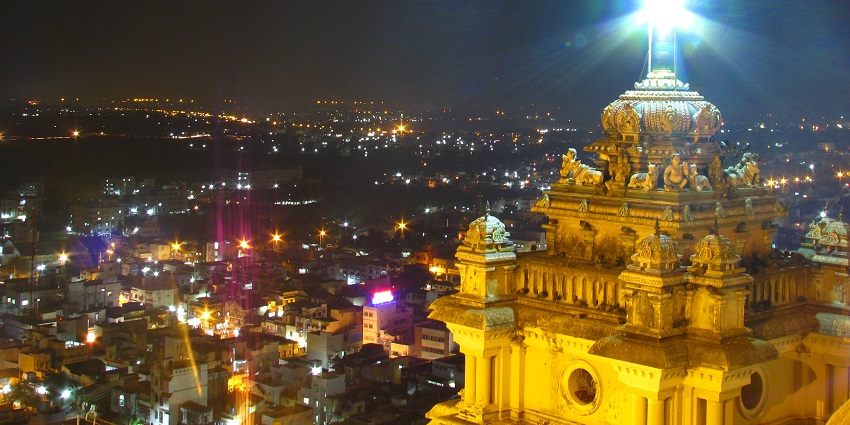
Photo: Santhoshj / Wikimedia Commons
One of Tiruchirappalli’s most famous landmarks, the Rockfort Temple, is a stunning shrine dedicated to Lord Ganesha, situated on a massive 273-foot high rock formation. The temple’s unique positioning requires visitors to climb 417 steps carved into the rock to reach the top, providing an adventurous journey. Once at the summit, visitors are rewarded with a panoramic view of the city and the surrounding landscape, making it a favourite spot for photographers and tourists alike.
Location: Tiruchirappalli
Entry Fee: Free
Timings: 6 AM – 8 PM
3. Jambukeswarar Temple (Thiruvanaikaval)
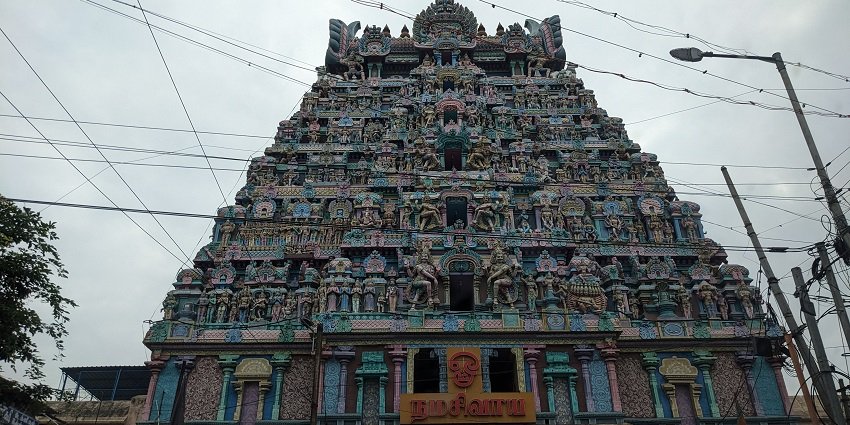
Photo: Vinayaraj / Wikimedia Commons
Situated on the outskirts of Tiruchirappalli, Jambukeswarar Templeis dedicated to Lord Shiva and is renowned for its association with the element of water. The temple is part of the Pancha Bhoota Stalam, which represents the five elements, with Jambukeswarar representing water. The temple’s inner sanctum features a Shiva lingam that is perpetually surrounded by water, symbolising the omnipresence of this element in the form of a natural underground spring. The temple, adorned with striking pillars, courtyards, and sculptures, reflects ancient Dravidian architectural styles. This spiritual site attracts devotees seeking blessings from Lord Shiva and his consort Goddess Parvati, known as Akhilandeshwari. The peaceful, meditative atmosphere makes it an excellent place for quiet reflection and devotion.
Location: Thiruvanaikaval, Tiruchirappalli
Entry Fee: Free
Timings: 6 AM – 12 PM, 4 PM – 9 PM
Suggested Read: Vishnu Temples In Chennai For A Blissful And Spiritual Experience
4. Vekkali Amman Temple
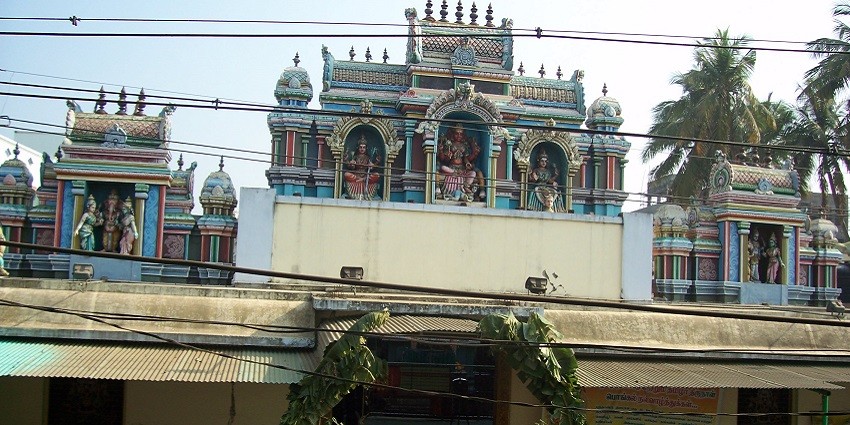
Photo: TRYPPN / Wikimedia Commons
Vekkali Amman Temple, located in the historic town of Woraiyur, is one of Tiruchirappalli’s most significant temples, dedicated to Goddess Vekkali Amman. Unique among Hindu temples, Vekkali Amman Temple is open to the sky, with no roof above the sanctum. This design symbolises that the goddess will protect her devotees regardless of the circumstances. The temple holds a special place in the hearts of locals, and the goddess is believed to have protective powers, particularly during difficult times.
Location: Woraiyur, Tiruchirappalli
Entry Fee: Free
Timings: 6 AM – 8 PM
5. Mukkombu Dam (Upper Anaicut)
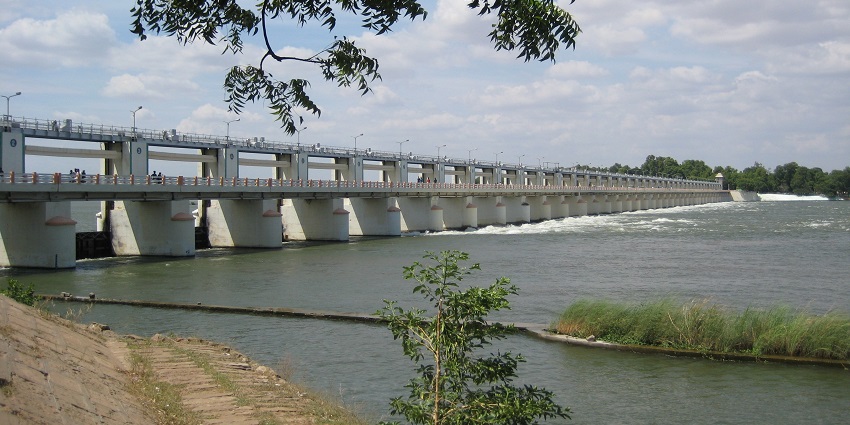
Photo: Wesleyneo / Wikimedia Commons
Mukkombu Dam, also known as Upper Anaicut, is a scenic spot situated about 25 kilometres from Samayapuram. The dam is constructed at the point where the Kollidam River branches off from the Cauvery River. Mukkombu is an ideal place for nature lovers and families seeking a relaxing getaway. The area around the dam is lush with greenery, providing a refreshing break from the city’s hustle and bustle. Visitors often come here to enjoy picnics, walks along the riverbank, and the tranquil atmosphere of flowing water.
Location: 25 km from Samayapuram, Tiruchirappalli
Entry Fee: Free
Timings: 24*7
Suggested Read: Temples In Besant Nagar
Where To Stay

Photo: Engin_Akyurt / Pixabay / Image For Representation Only
For a comfortable stay near Mariamman Temple, you can choose from several options. Hotel High Point in Trichy offers mid-range accommodation with clean rooms and proximity to major attractions. SRM Hotel in Samayapuram is ideal for those who prefer to stay closer to the temple, offering spacious rooms and convenient amenities. If you seek luxury, Grand Gardenia in Tiruchirappalli provides premium facilities. Hotel Femina, also in Trichy, is another popular choice with a family-friendly atmosphere and a range of rooms to suit various budgets, providing easy access to both the temple and the railway station.
Where To Eat

Photo: Chan Walrus / Pexels / Image For Representation Only
There are many excellent dining options near Mariamman Temple, catering to those seeking traditional Tamil food. Shri Sangeethas Vegetarian Restaurant in Trichy is a great spot for authentic South Indian meals, including dosa, idli, and sambar. Closer to the temple, Annapoorna Mithai offers delicious vegetarian meals along with fresh sweets and snacks. For a true taste of Tamil cuisine, Meenakshi Bhavan in Tiruchirappalli is highly recommended.
Suggested Read: Best Food In Rameshwaram To Try For A Culinary Delight
Best Time To Visit
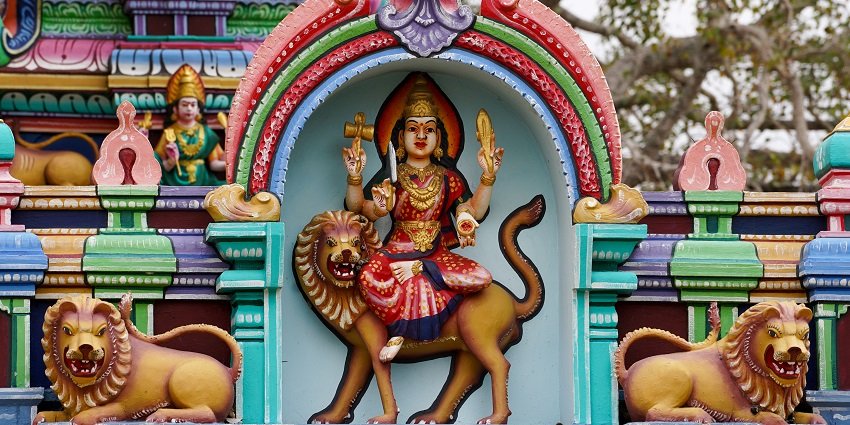
Photo: Timothy A. Gonsalves / Wikimedia Commons
The Mariamman Temple is best visited during the annual Panguni Uthiram festival, between March and April. The lavish festival will have all sorts of elaborate rituals, processions, and offerings, which attract thousands of devotees. Otherwise, visiting the temple during the cooler months of November to February is quite good, as the climate is pleasant for outdoor activities.
Other Factors To Consider
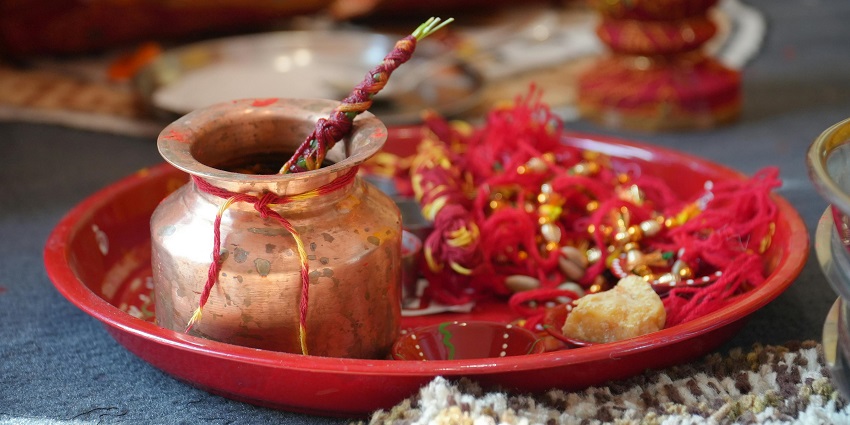
Photo: Vijay Krishnawat / Pexels / Image For Representation Only
- Plan For Early Mornings: If you wish to avoid large crowds, visiting the temple early in the morning, right after it opens, is ideal. This allows for a peaceful darshan (viewing of the deity).
- Stay Hydrated: Tamil Nadu can get hot, especially during the summer. Carry water bottles with you, but ensure you dispose of them properly to maintain the temple’s sanctity.
- Footwear Storage: As with many Hindu temples, footwear is not allowed inside. There are designated places near the entrance to store shoes, so don’t worry about leaving them outside.
- Nearby Essentials: There are many small shops near the temple selling offerings, religious items, and souvenirs. You can also find basic amenities like restrooms and small eateries close by.
Suggested Read: Places To Visit In Chidambaram
Visiting the Mariamman Temple is not just a spiritual journey but also a cultural immersion into Tamil Nadu’s rich religious traditions. Whether you’re a devotee seeking blessings or a traveller curious about South Indian temple architecture and rituals, the temple offers a memorable experience. With nearby attractions, comfortable accommodation options, delicious local cuisine, and TripXL as your travel guide ,Samayapuram is a destination that caters to the spiritual and practical needs of every traveller.
Cover Photo: Bahnfrend / Wikimedia Commons


 WhatsApp
WhatsApp
 Twitter
Twitter









